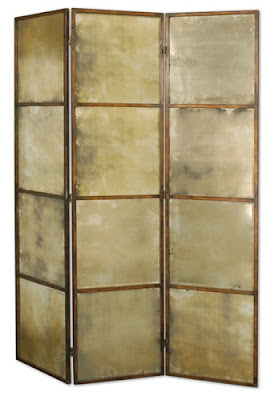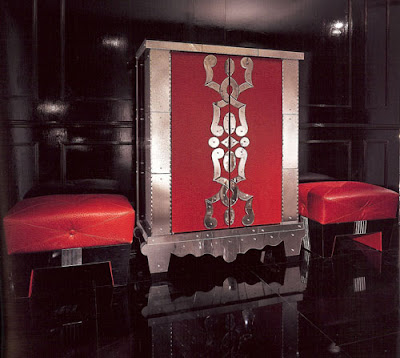These days, mirrors can be found throughout most every home in the world, but they were not always as accessible to the masses. Mirrors date back as to the ancient Greeks and Romans. These first mirrors were simply highly polished disk of bronze, silver or copper. These mirrors would be small, usually with a decorative side opposite the mirror and with a handle for holding.

Seated woman holding a mirror. Ancient Greek Vase, ca. 470-460 BC, National Archaeological Museum, Athens
The first glass mirrors known to exist have been found in 2nd and 3rd century Roman graves, these being shards of glass with lead applied to one side of the glass. Mirrors were made throughout Europe using different methods with little success until the 16th century Venetians perfected coating glass with an amalgam of tin and mercury. This process, besides being highly toxic, was very timely to produce thus yielding an item only available to the wealthiest.
When Versailles was commissioned to be built in the 17th century, the French Minister of Finance Jean-Baptiste Colbert from 1665 to 1683 under the rule of King Louis XIV, enticed workers from Venetian factories to come to France and make glass and mirrors at the Gobelins Factory. The famous Galerie des Glaces, or Hall of Mirrors is one of the most recognizable rooms in the world. It consists of 357 mirrors lining the 239.5 ft × 34.4 ft × 40.4 ft space. The technological innovative process of high temperature melting of the glass, allowed for such large pieces to be created for the first time.

Galerie des Glaces (Hall of Mirrors), Versailles, France
The next major innovation in mirrors was in 1835 when German chemist Justus von Liebig created the process of silvering glass. His method placed silver onto the glass using the chemical reduction of silver nitrate. This method now allowed for mass production, allowing greater availability of affordable mirrors. Modern household mirrors are made simply by coating a thin layer of molten silver or aluminum, poured onto plate glass in a vacuum.
Mirrors have many functions in today’s society, from telescopes to automobiles, but their household use still ranks number one. In addition to mirrors being used in functional design such as in bathrooms, decorative mirrors are all the rage in design. They are used to create dramatic spaces, reflecting light and often making a room seem larger. Frames are available in a plethora of styles, materials and finishes. Mirrors are also used to create dramatic furniture, floor screens, lighting and a variety of accessories.
I use mirrors in most every design that I do and encourage you to do the same in your design. Below I chose mirrors in a variety of applications that I LOVE! …REFLECT!
 L'Oreille Qui Voit Mirror #3 (Philippe Starck) from Made In Design
L'Oreille Qui Voit Mirror #3 (Philippe Starck) from Made In Design Red Metallic Mirror from Plantation
Red Metallic Mirror from Plantation  Bamboo Mirror from Global Views
Bamboo Mirror from Global Views Taffy Mirror from Artful Home
Taffy Mirror from Artful Home  Wood Floor Mirror by River Mirrors
Wood Floor Mirror by River Mirrors Fulton Burlwood Mirror from William Sonoma Home
Fulton Burlwood Mirror from William Sonoma Home Bolinas Mirror from Z Gallerie
Bolinas Mirror from Z Gallerie Pierre Mirror from Z Gallerie
Pierre Mirror from Z Gallerie  Large Shatter Mirror from Exclusive Mirrors
Large Shatter Mirror from Exclusive Mirrors  Trapini Mirror from Uttermost
Trapini Mirror from Uttermost Verona Screen from Cyan Design
Verona Screen from Cyan Design Avidan Screen from Uttermost
Avidan Screen from Uttermost Classic Screen from Oriental Unlimited
Classic Screen from Oriental Unlimited Directoire Table from Global Views
Directoire Table from Global Views Mirror Cabinet on Stand from Peyton Home
Mirror Cabinet on Stand from Peyton Home  Pagoda Console from RKF
Pagoda Console from RKF  Deco Mirrored Console from Furniture In Fashion
Deco Mirrored Console from Furniture In FashionFor more information on any of the above shown items, please contact me at: tm@terrancemasoninteriors











